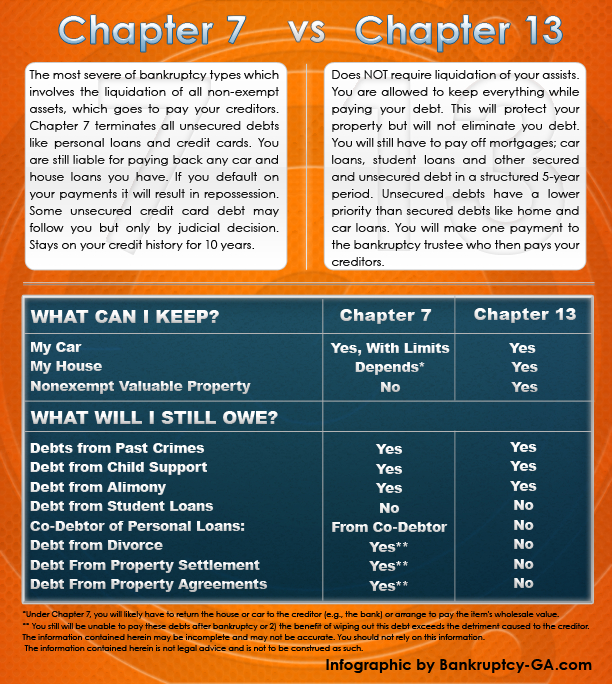There are some things that elude us. The differences between porpoises and dolphins, sparrows and finches are two examples. Another is that of the options of bankruptcy. Fortunately, there is the Chapter 7 vs. Chapter 13–What is the Difference? infographic.
What we found out is that there is not a significant or meaningful amount of difference. In facing bankruptcy, the difference is akin to falling from a 30-feet tall building and a 40-feet tall building; in all cases, the outcome is not an intrinsically desirous thing. Having said that though, Chapter 7 seems to be the more attractive option. Being the better option (in many cases), it is also the one that is more difficult to qualify for.
The infographic shows these differences in both prose and a graph. What is not mentioned, however, is what happens to taxes. From cursory research elsewhere, it seems that Chapter 7 may be able to discharge taxes (although perhaps just federal income taxes, not state and local taxes). However, it seems to be a case of damned if you do and damned if you don’t. Again, Chapter 7 is one that is more difficult in qualifying, and even if you do qualify for it, it may be burdensome to have those taxes discharged.
One thing that we had heard and read–and which the infographic verifies–is that student loans cannot be discharged under either option. We suppose that this makes sense. The repayment of student loans purportedly goes to the issuance of new student loans (i.e., to the next generation of students).
Likes: The infographic is succinct, yet includes a comprehensive amount of information.
Dislikes: At the same time, it feels incomplete. Perhaps a section on how to apply for them would be better.
Courtesy: Bankruptcy-ga.com

